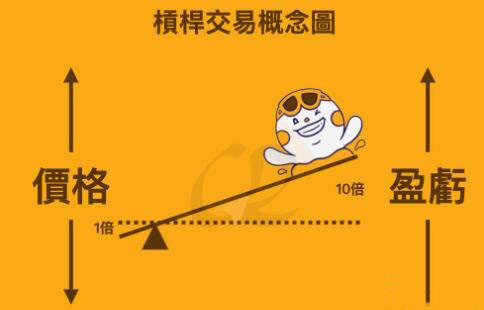C# 生成word
时间:2011-06-08 来源:王德田
private void button1_Click(object sender, System.EventArgs e)
{
object oMissing = System.Reflection.Missing.Value;
object oEndOfDoc = "\\endofdoc";
/* \endofdoc是预定义的bookmark */
//创建一个document.
Word._Application oWord;
Word._Document oDoc;
oWord = new Word.Application();
oWord.Visible = true;
oDoc = oWord.Documents.Add(ref oMissing, ref oMissing,
ref oMissing, ref oMissing);
//在document的开始部分添加一个paragraph.
Word.Paragraph oPara1;
oPara1 = oDoc.Content.Paragraphs.Add(ref oMissing);
oPara1.Range.Text = "Heading 1";
oPara1.Range.Font.Bold = 1;
oPara1.Format.SpaceAfter = 24; //24 pt spacing after paragraph.
oPara1.Range.InsertParagraphAfter();
//在当前document的最后添加一个paragraph
Word.Paragraph oPara2;
object oRng = oDoc.Bookmarks.get_Item(ref oEndOfDoc).Range;
oPara2 = oDoc.Content.Paragraphs.Add(ref oRng);
oPara2.Range.Text = "Heading 2";
oPara2.Format.SpaceAfter = 6;
oPara2.Range.InsertParagraphAfter();
//接着添加一个paragraph
Word.Paragraph oPara3;
oRng = oDoc.Bookmarks.get_Item(ref oEndOfDoc).Range;
oPara3 = oDoc.Content.Paragraphs.Add(ref oRng);
oPara3.Range.Text = "This is a sentence of normal text. Now here is a table:";
oPara3.Range.Font.Bold = 0;
oPara3.Format.SpaceAfter = 24;
oPara3.Range.InsertParagraphAfter();
//添加一个3行5列的表格,填充数据,并且设定第一行的样式
Word.Table oTable;
Word.Range wrdRng = oDoc.Bookmarks.get_Item(ref oEndOfDoc).Range;
oTable = oDoc.Tables.Add(wrdRng, 3, 5, ref oMissing, ref oMissing);
oTable.Range.ParagraphFormat.SpaceAfter = 6;
int r, c;
string strText;
for(r = 1; r <= 3; r++)
for(c = 1; c <= 5; c++)
{
strText = "r" + r + "c" + c;
oTable.Cell(r, c).Range.Text = strText;
}
oTable.Rows[1].Range.Font.Bold = 1;
oTable.Rows[1].Range.Font.Italic = 1;
//接着添加一些文字
Word.Paragraph oPara4;
oRng = oDoc.Bookmarks.get_Item(ref oEndOfDoc).Range;
oPara4 = oDoc.Content.Paragraphs.Add(ref oRng);
oPara4.Range.InsertParagraphBefore();
oPara4.Range.Text = "And here's another table:";
oPara4.Format.SpaceAfter = 24;
oPara4.Range.InsertParagraphAfter();
//添加一个5行2列的表,填充数据并且改变列宽
wrdRng = oDoc.Bookmarks.get_Item(ref oEndOfDoc).Range;
oTable = oDoc.Tables.Add(wrdRng, 5, 2, ref oMissing, ref oMissing);
oTable.Range.ParagraphFormat.SpaceAfter = 6;
for(r = 1; r <= 5; r++)
for(c = 1; c <= 2; c++)
{
strText = "r" + r + "c" + c;
oTable.Cell(r, c).Range.Text = strText;
}
oTable.Columns[1].Width = oWord.InchesToPoints(2); //Change width of columns 1 & 2
oTable.Columns[2].Width = oWord.InchesToPoints(3);
//Keep inserting text. When you get to 7 inches from top of the
//document, insert a hard page break.
object oPos;
double dPos = oWord.InchesToPoints(7);
oDoc.Bookmarks.get_Item(ref oEndOfDoc).Range.InsertParagraphAfter();
do
{
wrdRng = oDoc.Bookmarks.get_Item(ref oEndOfDoc).Range;
wrdRng.ParagraphFormat.SpaceAfter = 6;
wrdRng.InsertAfter("A line of text");
wrdRng.InsertParagraphAfter();
oPos = wrdRng.get_Information
(Word.WdInformation.wdVerticalPositionRelativeToPage);
}
while(dPos >= Convert.ToDouble(oPos));
object oCollapseEnd = Word.WdCollapseDirection.wdCollapseEnd;
object oPageBreak = Word.WdBreakType.wdPageBreak;
wrdRng.Collapse(ref oCollapseEnd);
wrdRng.InsertBreak(ref oPageBreak);
wrdRng.Collapse(ref oCollapseEnd);
wrdRng.InsertAfter("We're now on page 2. Here's my chart:");
wrdRng.InsertParagraphAfter();
//添加一个chart
Word.InlineShape oShape;
object oClassType = "MSGraph.Chart.8";
wrdRng = oDoc.Bookmarks.get_Item(ref oEndOfDoc).Range;
oShape = wrdRng.InlineShapes.AddOLEObject(ref oClassType, ref oMissing,
ref oMissing, ref oMissing, ref oMissing,
ref oMissing, ref oMissing, ref oMissing);
//Demonstrate use of late bound oChart and oChartApp objects to
//manipulate the chart object with MSGraph.
object oChart;
object oChartApp;
oChart = oShape.OLEFormat.Object;
oChartApp = oChart.GetType().InvokeMember("Application",
BindingFlags.GetProperty, null, oChart, null);
//Change the chart type to Line.
object[] Parameters = new Object[1];
Parameters[0] = 4; //xlLine = 4
oChart.GetType().InvokeMember("ChartType", BindingFlags.SetProperty,
null, oChart, Parameters);
//Update the chart image and quit MSGraph.
oChartApp.GetType().InvokeMember("Update",
BindingFlags.InvokeMethod, null, oChartApp, null);
oChartApp.GetType().InvokeMember("Quit",
BindingFlags.InvokeMethod, null, oChartApp, null);
//... If desired, you can proceed from here using the Microsoft Graph
//Object model on the oChart and oChartApp objects to make additional
//changes to the chart.
//Set the width of the chart.
oShape.Width = oWord.InchesToPoints(6.25f);
oShape.Height = oWord.InchesToPoints(3.57f);
//Add text after the chart.
wrdRng = oDoc.Bookmarks.get_Item(ref oEndOfDoc).Range;
wrdRng.InsertParagraphAfter();
wrdRng.InsertAfter("THE END.");
//Close this form.
this.Close();
}
使用模板
如果您要使用自动化功能创建的文档都是通用格式,则利用基于预设格式的模板的新文档来开始创建过程会更加容易。与从头创建文档相比,将某个模板与 Word 自动化客户端配合使用有两大优点:
| • | 您可以对整个文档中的对象的格式设置和布局施加更多控制。 |
| • | 可以使用较少的代码创建文档。 |
object oTemplate = "c:\\MyTemplate.dot";
oDoc = oWord.Documents.Add(ref oTemplate, ref oMissing,
ref oMissing, ref oMissing);
object oBookMark = "MyBookmark";
oDoc.Bookmarks.Item(ref oBookMark).Range.Text = "Some Text Here";
object oStyleName = "MyStyle";
oDoc.Bookmarks.Item(ref oBookMark).Range.set_Style(ref oStyleName);
object oStyleName = "MyStyle";
oWord.Selection.set_Style(ref oStyleName);
最主要的就是理解word application 的框架层次,其它的就像面向过程编程一样,一步步写代码,其中比较麻烦的是嵌套的表格... 









